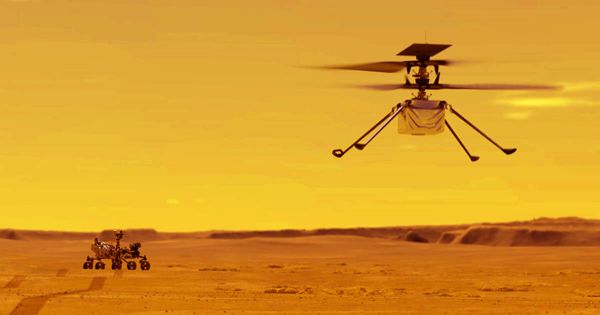The Perseverance rover from NASA will land on Mars to begin an audacious mission to return samples of Martian rock and soil to Earth. Two robotic rovers will collect the best specimens, and an elaborate delivery system will transport this material home. Scientists hope to learn more about whether life ever existed on Mars by studying the samples using techniques available only in Earth laboratories.
According to a video, update tweeted from the Mars rover’s anthropomorphized Twitter account, NASA’s latest Mars rover, Perseverance, is gearing up to finally begin its long-awaited mission: gathering samples of Mars rocks and packaging them for a return journey to Earth, where they’ll be tested for signs of ancient microbial life.
“I’m getting ready to collect Martian samples in search of ancient microbial life,” says the tweet. “As part of the process, I’ve been testing the coring system on my robotic arm to ensure it functions properly before drilling some of the interesting rocks around me.”
Perseverance is tasked with searching for telltale signs that microbial life may have lived on Mars billions of years ago. It will collect rock core samples in metal tubes, and future missions would return these samples to Earth for deeper study.
The Mars 2020 Perseverance rover will be NASA’s ninth mission to land on Mars. The rover is interested in astrobiology, or the study of life throughout the universe, in addition to characterizing the planet’s geology and climate and paving the way for human exploration beyond the Moon. Perseverance is tasked with looking for evidence that microbial life existed on Mars billions of years ago. It will collect rock core samples in metal tubes, which will be returned to Earth for further study on future missions.
NASA’s fifth rover to Mars carries a new suite of scientific instruments to expand on the findings of NASA’s Curiosity rover, which discovered that parts of Mars could have supported microbial life billions of years ago.

Perseverance, a six-wheeled robotic machine equipped with 23 cameras and a drill, will search for signs of ancient life in the Jezero crater. It will collect rock and soil samples that appear to have been altered by microorganism contact. The rover will collect samples in metal canisters and store them on the Martian surface before continuing its mission. The plutonium-based power supply on Perseverance could keep the rover trundling around Mars for 10 years or more.
Changing Gears
NASA is entering a new phase of research after focusing on the Ingenuity Mars helicopter for the past month. Unfortunately, it will be some time before any testing results are available, as the rover still needs to test a few of its own components and maneuvers before it can collect more samples to ship back to Earth.
“With this recent fifth helicopter flight, we’re transitioning from the technology demonstration phase to more of an operations demonstration phase as we now focus more on the robotic arm science-based portion of the mission and as we prepare for the sample acquisition phase of the project,” Perseverance surface mission manager Jessica Samuels said in the video.
“We need to ensure that we can safely place and load the robotic arm on the surface of Mars to ensure that we are ready for this first, one-of-a-kind leg of collecting samples and preparing them to bring them back to Earth,” Samuels said.
Perseverance is outfitted with a plethora of sensors and scanners, but it appears that the majority of the analysis will take place in labs on Earth, assuming delivery is successful. So it may be a while before we get any big answers about life on Mars, but NASA is putting Perseverance in place so that it can begin digging.
Scientists will then study the rocks and soil using cutting-edge techniques, including some that have yet to be invented, because there should be enough material to study for decades. The samples will provide information about Mars’ history and whether or not it has ever supported microbial lifeforms.
















